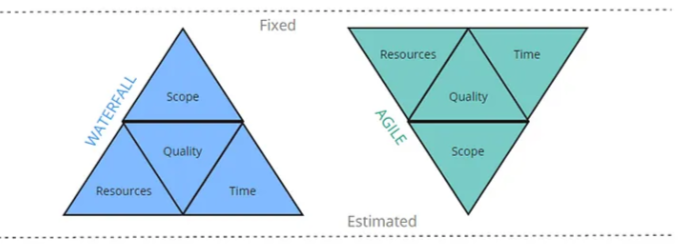In software development the introduction of scrum is primarily a management decision, and luckily developers mostly welcome this change as they expect to have more participation and freedom in what they are doing. But at the beginning of the transformation from a waterfall project to an agile development the management still sticks to some antipatterns which are crucial for an agile success. In this article I address the misconceptions you might face in the agile transformation.
Roadmap Adjustments
In a non-agile development management creates a feature roadmap and estimates which resources are needed and how much time they would spend. In most cases this does not work very well as managers estimate effort based on how good they are able to sell the features instead on how much effort it might take to actual develop it. One important aspect of changing to an agile development is, that the development teams are going to estimate the effort.
After the decision has been taken to let the development teams working the agile way, the roadmap and its promised delivery dates are often unchanged. Customers still got the old due date. Companies fear, that if their agile teams need to act to re-estimate the roadmap, they will get another result and must communicate new delivery dates, but agile working has mostly been introduced because the management estimations did not fit the actual effort. Hence it is essential for companies to recheck any roadmap and delivery dates at the very beginning of the agile transformation.
…
Agile departments
The transformation of a company to work agile is easiest if started with development, as there is the biggest impact. However, companies tend to think that working agile is restricted to the development department and it might be enough if other departments are informed about the change without a plan on how the change influences the work between the department.
So it might be that the sales department is still selling waterfall projects and do not even offer to work agile with the customer, as they not informed thoroughly about the differences and advantages of an agile customer project. Companies tend to think that agility stops at the development, but it really needs to go all the way, reaching everybody in the organisation.
The scrum master as facilitator of the agile transformation within the scrum team and beyond needs to be enabled to fulfil this task. If this need of the scrum master role is accepted within the company the agile transformation started with the development will make it to the whole company.
Be brave
Starting the agile transformation within the development is the easiest way, but this is just the beginning. Getting all the advantages agility can deliver companies need to be brave enough to transform in total.
